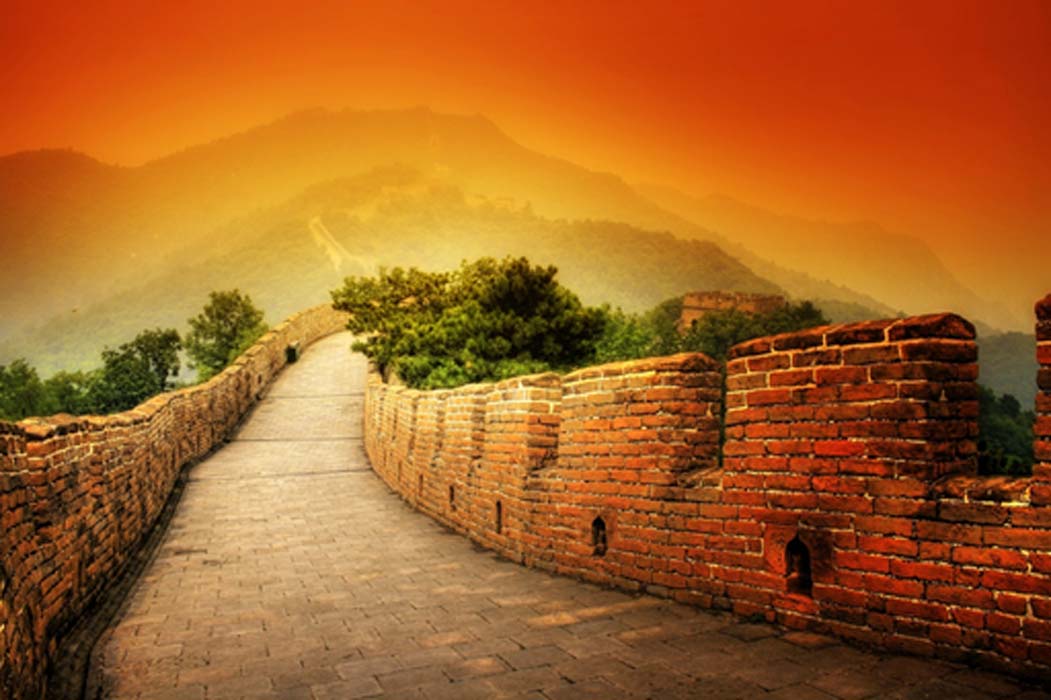Hidden For A Thousand Years – China's “Underground Great Wall”
In ancient Chinese history it is recorded that The Northern Song Dynasty (960-1127 AD) battled for 200 years with the Liao and Jin Dynasties, which at the time were ruled by minority races from China's Northern Territories, the Khitan and Jurchens respectively. The Northern China Plain was an endless flat ground, with no mountains or rivers that could be used to help defend against the northerners. How then, did the weaker Song Dynasty manage to survive for such a long period of time?
Yongqing Ancient War Passages
In the summer of 1948, Yongqing village, Hebei province experienced a great flood that moved swiftly through the town. Villagers were running for their lives when a thunderous noise was heard. The course of the flood suddenly diverted and before long the level of the floodwater was much lower. Some time later in the northwest part of the village, curious villagers found that the floodwater had in fact been diverted by an underground passage.

‘The Yellow River Breaches its Course’ by Ma Yuan. (Public Domain)
In 1951, a house located 2.5 kilometers outside of Yongqing township abruptly caved in, exposing an underground cave some 150 square meters in size. Within the cave, dozens of small doors, each opening to a passageway, were found. Inside were small huts with half burnt candles and lamps on heatable brick beds.
Upon further investigation, experts found that ancient war passages were spread throughout Yongqing County in an area covering approximately 300 square kilometers.
- Kumbhalgarh: The Great Wall You Have Never Heard Of (and it is NOT in China)
- Exclusive: Discovery of New Prehistoric Underground Tunnels at Bosnian Pyramids
- The Enigmatic Erdstall Tunnels of Europe: Purpose - Unknown
Who Built the Ancient War Passages and When?
Experts discovered that the Yongqing ancient war passages were widespread. They were in fact a large-scale construction used to house troops during times of war. The structures of the caves were complicated and complete, possessing military facilities such as camouflaged exits, covers, and locking gates. Facilities for housing people were also found, such as ventilation holes, lamp stands, and heatable brick beds. The “blue bricks” used in the construction of the passageways were 30×16×8 cubic centimeters in size. This kind of brick, created using fine soil baked at high temperatures, was very solid and robust; the use of such facilities suggests a well thought out and sophisticated underground network had been established at some point in time.

Military figures, Northern Song dynasty, 11th century, pottery, iron brown pigment and clear glaze, Lowe Art Museum. (CC0)
Further investigation revealed that the blue bricks found in Yongqing County were the same as the bricks found in underground passages in Qigang, Xiong County from the Song Dynasty. The creation and maintenance of such a massive underground network required a great number of these bricks. It is believed that these ancient war passages were constructed as part of a large nation-wide project created and overseen at a national level by the governing authorities of the time.
- Discovered: The Great Wall of Siberia Dating to 1st millennium BC
- A Labyrinth of Ancient Tunnels Exist Under Roman Streets
- Just for Waste and Water…Right? The Knights of Malta and Their Secret Tunnels
The Passages Spread Over 1,600 Square Kilometers
Experts have dug out similar war passages in Yongqing, Xiong county, and Bazhou. The ancient war passages are about 65 kilometers from east to west, 25 kilometers from north to south, which extend through 1,600 square kilometers. When the border between the Song Dynasty and the Liao Dynasty went as far west as Rongcheng county and Xushui county, it is thought that many ancient war passages existed in that area. How far the ancient war passages extended eastwards from Yongqing is still unknown.

No one knows how far the ancient war passages extend eastwards from Yongqing. (CC0)
Hiding Soldiers in the Ancient War Passages to Defend the Country
Amidst many legends about the underground network, one states that the ancient war passages were built by General Yang and his family; a family that produced three great generals over three generations. Another legend suggests that General Yang Liulang used the underground passageways to defend the border. At the time (960-1127 AD), soldiers of the Liao Dynasty strictly guarded the lands north of Yongqing County. It is said that Yang Liulang built the passages to hide his soldiers underground so they could quickly defend against attacks launched by the Liao soldiers.

“Four Generals of Zhongxing” by Southern Song Dynasty artist Liu Songnian (1174–1224). (Public Domain)
Experts point out that the underground passages may have been used as base for launching attacks during wars fought in ancient China. As a means of defense throughout the years, people have built great walls in mountainous areas and water fields near rivers and lakes to block cavalries. However, in the open plains, where it is difficult to use the terrain as a means of defense, the tunnels would have allowed soldiers to travel unseen below the earth. The ancient war passages have become famous for the advantages they provide whether the troops are attacking or defending, and they have been named the “underground Great Wall.”
Top Image: The famous Great Wall of China has an underground companion. Source: Big Stock Photo
The article ‘Hidden For A Thousand Years – China's “Underground Great Wall”’ was originally published on The Epoch Times and has been republished with permission.


















Comments
I find it interesting that these figure have round eyes. What was the ethnicity of these peoples.
I have read about other places with underground bunkers, notably Turkey. None seem to have been as nice as these. Even more places all over the world have extensive tunnel systems. The quality of construction suggest to me that they had more than a military purpose.